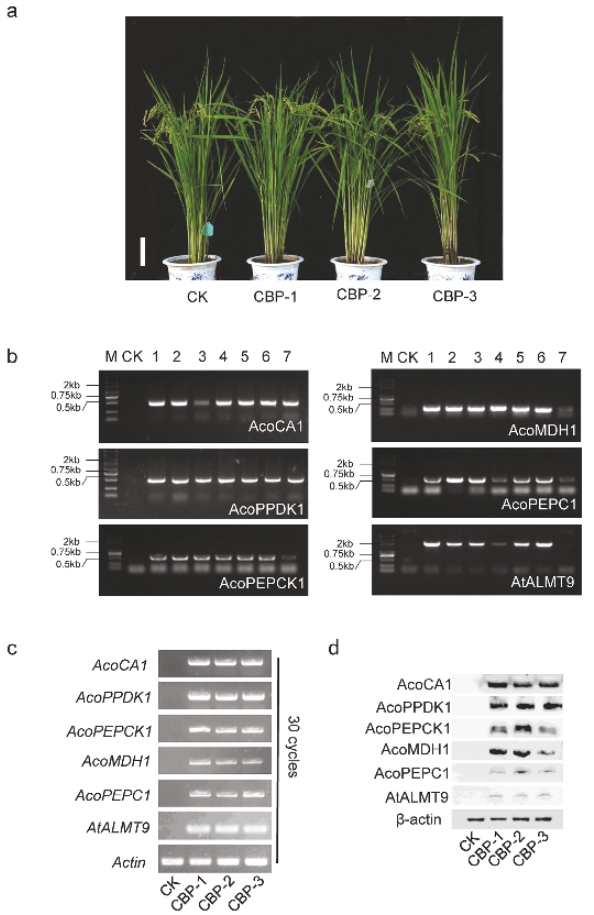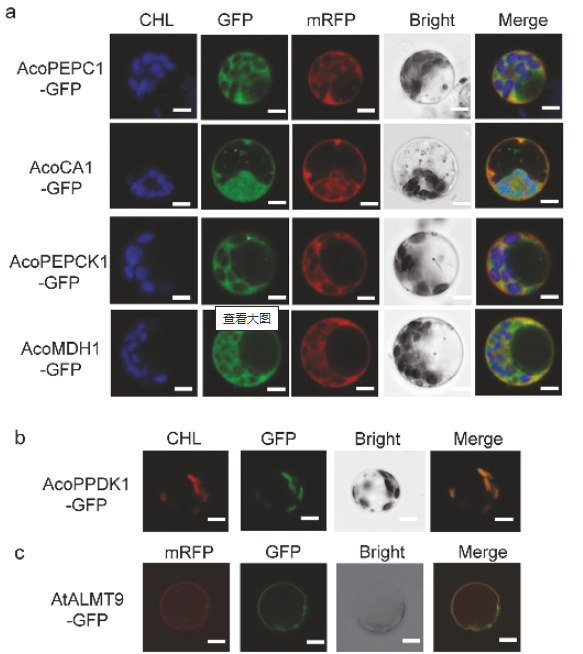Abstract:
Crassulacean acid metabolism (CAM) is one of the three major forms of photosynthesis, known for its efficient carbon sequestration mechanism. CAM plants store malate at night, which undergoes decarboxylation and promotes Rubisco carboxylation during the day. Despite its potential benefits, CAM engineering is not applied to C-3 crops. This paper introduces a designed facultative CAM bypass (CBP) in rice by incorporating codon-optimized nocturnal carboxylation and decarboxylation modules, a malate transporter module, and a stomatal regulation module using the transgene stacking system. The CBP plants are correctly assembled by detection at the gene level, transcription level, protein level, and enzyme activity. Malate, CAM metabolism product, accumulated significantly at night in CBP plants. Metabolic analysis revealed that the malate is directed to the citric acid cycle and impacted carbon sequestration. The CBP plants showed a significant increase of approximate to 21% and approximate to 27% in photosynthetic rate and carboxylation efficiency, respectively. Additionally, CBP plants exhibited approximate to 20% increase in grain yield and biomass over the 2-year field trials. Unexpectedly, the water use efficiency and drought resistance do not improve in CBP plants. This study is the first to attempt CAM engineering in C-3 and demonstrates the potential of facultative CAM carbon sequestration in rice.
Key Words:
C-3 rice;;carbon sequestration;;crassulacean acid metabolism;;multi-transgene stacking systems


|